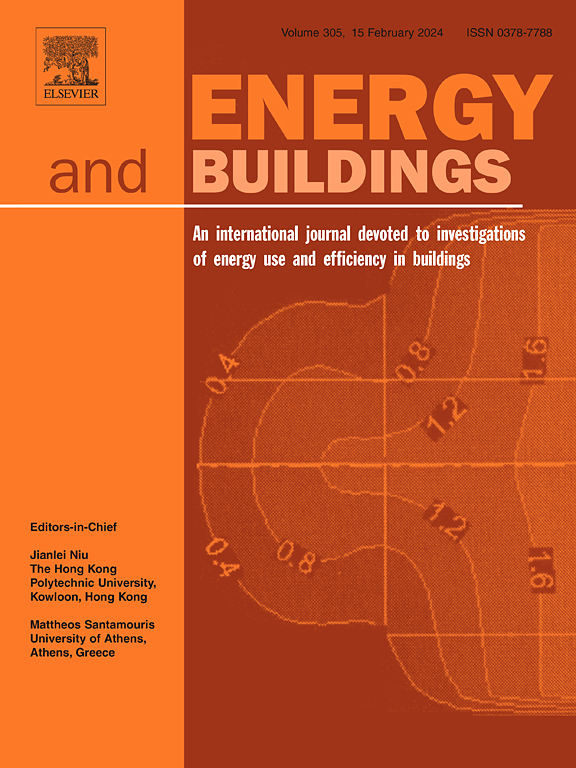温度适应性日间被动辐射冷却:其基本特性对不同类型建筑节能性能的影响
IF 6.6
2区 工程技术
Q1 CONSTRUCTION & BUILDING TECHNOLOGY
引用次数: 0
摘要
被动式日间辐射冷却(PDRC)材料可在炎热时期减少建筑物的制冷需求,但在寒冷时期会增加供暖需求,即所谓的供暖惩罚,从而限制了其实用性。温度自适应(TA)材料提供了一种解决方案,但对其最佳的 TA PDRC 特性,如从高表面温度(HST)到低表面温度(LST)状态的反射率或发射率变化,以及发生这些变化时的开关温度,研究尚不充分。为了解决这个问题,我们将与波长相关的 PDRC 模型与 EnergyPlus 相结合,以确定 HST 和 LST 状态下的最佳反射率或发射率,并确定适当的切换温度。结果表明,不同气候条件下需要不同的反射率和发射率值,以最大限度地发挥 TA PDRC 的优势。从 15 °C 到 30 °C 的切换温度主要影响冷却效益,而对加热惩罚的影响很小。此外,TA PDRC 的供热损失和制冷效益因建筑类型而异,因此需要调整 TA PDRC 的运行特性和暖通空调系统,以优化优势。在各种建筑类型中,商场从 PDRC 应用中获益最多。本文章由计算机程序翻译,如有差异,请以英文原文为准。
Temperature adaptive passive daytime radiative cooling: The impact of their essential properties on energy performance of different building types
Passive daytime radiative cooling (PDRC) materials can reduce building cooling demands during hot periods but increase heating needs in colder times, known as heating penalties, limiting their practicality. Temperature adaptive (TA) materials offer a solution, yet optimal TA PDRC properties, such as changes in reflectivity or emissivity from high surface temperature (HST) to low surface temperature (LST) states and the switch temperature at which these changes occur, are under-researched. To address this, a wavelength-dependent PDRC model was coupled with EnergyPlus to identify the optimal reflectivity or emissivity in HST and LST states and determine the appropriate switch temperature. Results show that different reflectivity and emissivity values are needed for various climates to maximize TA PDRC benefits. Switch temperatures from 15 °C to 30 °C primarily affect cooling benefits with minimal impact on heating penalties. Additionally, the heating penalty and cooling benefit of TA PDRC vary across building types, requiring alignment between TA PDRC operational characteristics and HVAC systems to optimize advantages. Among building types, malls benefit the most from PDRC application.
求助全文
通过发布文献求助,成功后即可免费获取论文全文。
去求助
来源期刊

Energy and Buildings
工程技术-工程:土木
CiteScore
12.70
自引率
11.90%
发文量
863
审稿时长
38 days
期刊介绍:
An international journal devoted to investigations of energy use and efficiency in buildings
Energy and Buildings is an international journal publishing articles with explicit links to energy use in buildings. The aim is to present new research results, and new proven practice aimed at reducing the energy needs of a building and improving indoor environment quality.
 求助内容:
求助内容: 应助结果提醒方式:
应助结果提醒方式:


